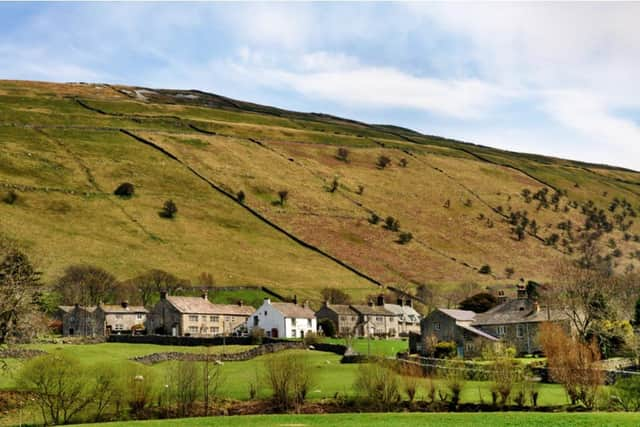New houses on edge of Yorkshire Dales are 'creating homes for commuters' to Leeds and Bradford
Members of the Yorkshire Dales National Park Authority have called for proposals to focus housing development in the protected area’s larger settlements, and mainly near its southern boundary, to be reconsidered ahead of its Local Plan progressing later this year.
Most of the proposed development land is in the park’s largest settlements, with up to 50 homes in Hawes, 92 homes in Sedbergh, 199 homes in Grassington and neighbouring Threshfield and 119 more homes nine miles away in Embsay, but sites have also been identified in other villages.
Advertisement
Hide AdAdvertisement
Hide AdUnder the proposed plans additional housing will also be able to be built on smaller plots of land in housing development boundaries.


The proposed strategy follows the North Yorkshire Rural Commission concluding that to make remote communities sustainable each parish in rural North Yorkshire should see five houses built over a ten-year period, 40 per cent of which needed to be affordable or available for rent.
A full meeting of the authority at its base in Wensleydale was told that while North Yorkshire and Westmorland and Furness councils had indicated broad support for the blueprint, hundreds of residents were opposed to it.
Members were told following a survey of 139 sites put forward by landowners and planning officers for housing in the national park, only 33 of them, sufficient for 600 houses, had potential for allocation in the Local Plan.
Advertisement
Hide AdAdvertisement
Hide AdPeter Stockton, the authority’s head of sustainable development, told members its consultation over proposed sites to meet a housing target of 850 new homes by 2040, had seen residents object to the vast majority of 33 proposed sites.
He said: “Allocating land and then developing land for housing is quite a big change and has an effect on people’s lives.”
Residents told the consultation the potential site allocations were skewed to the former Craven area and the blueprint did not focus housing on areas needing it most.
As the authority’s members agreed a working group to reconsider the proposals, no one spoke in support of the current blueprint.
Advertisement
Hide AdAdvertisement
Hide AdSkipton councillor Robert Heseltine said the glue holding together village communities together across the national park was their facilities, and in particular schools, and their catchment areas needed to be strengthened by housing that would be occupied by young families, who also worked nearby.
He said: “That’s the only sustainable way of keeping those smaller communities together.”
Numerous members of the authority voiced their agreement as Graham Simpkins, who represents the northern area of the park, said the proposed housing would be used by people who worked in Leeds and Bradford and did not seem to meet the objectives of having viable communities within the Yorkshire Dales.
Wensleydale farmer Allen Kirkbride told the meeting more housing was sorely needed in the northern area of the park.
Upper Dales councillor Yvonne Peacock added: “Officers have put huge amounts of work into this, but now there is more work to do.”
